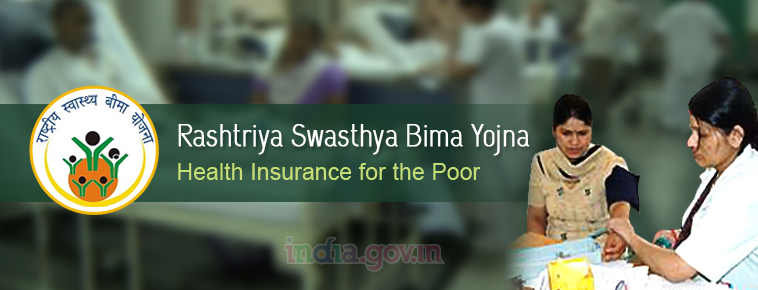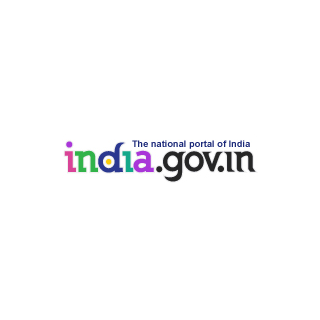
The workers in the unorganized sector constitute about 93% of the total work force in the country. The Government has been implementing some social security measures for certain occupational groups but the coverage is miniscule. Majority of the workers are still without any social security coverage. One of the major insecurities for workers in the unorganized sector is the frequent incidences of illness and need for medical care and hospitalization of such workers and their family members. Despite the expansion in the health facilities, illness remains one of the most prevalent causes of human deprivation in India.
It has been clearly recognized that health insurance is one way of providing protection to poor households against the risk of health spending leading to poverty. The poor are unable or unwilling to take up health insurance because of its cost, or lack of perceived benefits. Organizing and administering health insurance, especially in rural areas, is also difficult. Recognizing the need for providing social security to these workers, the Central Government has introduced the Rashtriya Swasthya Bima Yojana (RSBY). Till March 25, 2013, the scheme had 34,285,737 Smart Cards and 5,097,128 hospitalization cases.

In the past, the Government had tried to provide a health insurance cover to selected beneficiaries either at the State level or National level. However, most of these schemes were not able to achieve their intended objectives. Often there were issues with either the design and/ or implementation of these schemes.
Keeping this background in mind, Government of India decided to design a health insurance scheme which not only avoids the pitfalls of the earlier schemes but goes a step beyond and provides a world class model. A critical review of the existing and earlier health insurance schemes was done with the objective of learning from their good practices as well as seeks lessons from the mistakes. After taking all this into account and also reviewing other successful models of health insurance in the world in similar settings, RSBY was designed. It has started rolling from 1st April 2008.
RSBY- The Scheme
RSBY has been launched by Ministry of Labour and Employment, Government of India to provide health insurance coverage for Below Poverty Line (BPL) families. The objective of RSBY is to provide protection to BPL households from financial liabilities arising out of health shocks that involve hospitalization.
Eligibility
- Unorganized sector workers belonging to BPL category and their family members (a family unit of five) shall be the beneficiaries under the scheme.
- It will be the responsibility of the implementing agencies to verify the eligibility of the unorganized sector workers and his family members who are proposed to be benefited under the scheme.
- The beneficiaries will be issued smart cards for the purpose of identification.
Benefits
The beneficiary shall be eligible for such in - patient health care insurance benefits as would be designed by the respective State Governments based on the requirement of the people/ geographical area. However, the State Governments are advised to incorporate at least the following minimum benefits in the package / scheme:
- The unroganised sector worker and his family (unit of five) will be covered.
- Total sum insured would be Rs. 30,000/- per family per annum on a family floater basis.
- Cashless attendance to all covered ailments
- Hospitalization expenses, taking care of most common illnesses with as few exclusions as possible
- All pre-existing diseases to be covered
- Transportation costs (actual with maximum limit of Rs. 100 per visit) within an overall limit of Rs. 1000.
Funding Pattern
- Contribution by Government of India: 75% of the estimated annual premium of Rs. 750, subject to a maximum of Rs. 565 per family per annum. The cost of smart card will be borne by the Central Government.
- Contribution by respective State Governments: 25% of the annual premium, as well as any additional premium.
- The beneficiary would pay Rs. 30 per annum as registration/renewal fee.
- The administrative and other related cost of administering the scheme would be borne by the respective State Governments

An electronic list of eligible BPL households is provided to the insurer, using a pre-specified data format. An enrollment schedule for each village along with dates is prepared by the insurance company with the help of the district level officials. As per the schedule, the BPL list is posted in each village at enrollment station and prominent places prior to the enrollment and the date and location of the enrolment in the village is publicized in advance. Mobile enrollment stations are set up at local centres (e.g., public schools) in each village.
These stations are equipped by the insurer with the hardware required to collect biometric information (fingerprints) and photographs of the members of the household covered and a printer to print smart cards with a photo. The smart card, along with an information pamphlet, describing the scheme and the list of hospitals, is provided on the spot once the beneficiary has paid the 30 rupee fee and the concerned Government Officer has authenticated the smart card. The process normally takes less than ten minutes. The cards shall be handed over in a plastic cover.
Smart Card
Smart card is used for a variety of activities like identification of the beneficiary through photograph and fingerprints, information regarding the patient. The most important function of the smart card is that it enables cashless transactions at the empanelled hospital and portability of benefits across the country. The authenticated smart card shall be handed over to the beneficiary at the enrollment station itself. The photograph of the head of the family on the smart card can be used for identification purpose in case biometric information fails.

A list of the hospitals (both public and private) (External website that opens in a new window) will be provided at the time of enrollment. A helpline number will also be provided along with the smart card. Based on the qualifying criteria, both public and private hospitals will be empanelled by the insurance company. The beneficiary will have the option to choose hospitals where they want to go.
No payment for the treatment cost up to Rs. 30000/- would be paid to the hospital.
In case of Cashless service, the patient will not have to spend any amount for taking the treatment and hospitalization. It is the job of hospital to claim from the insurer.
Unique Features Of Rsby
The RSBY scheme is not the first attempt to provide health insurance to low income workers by the Government in India. The RSBY scheme, however, differs from these schemes in several important ways.

Central Complaint and Grievance Redressal System (External website that opens in a new window) (CGRS) ensures that the grievance relating to RSBY is disposed by the use of ICT which automatically tracks and pursues the status. All the stake holders can file an online complaint (External website that opens in a new window) about the Scheme. Online tracking facility of the complaint is also available. Users can refer the manual (External website that opens in a new window) for detailed information related to CGRS.
Related Links
- State-wise scheme status (External website that opens in a new window)
- Empanelled Hospitals (External website that opens in a new window)
- De-Empanelled Hospitals (External website that opens in a new window)
- FAQs on RSBY (External website that opens in a new window)
- Policy and Guidelines (External website that opens in a new window)
- Online Complaint on RSBY (External website that opens in a new window)
- RSBY Videos (External website that opens in a new window)




 Empowering the Beneficiary
Empowering the Beneficiary 

